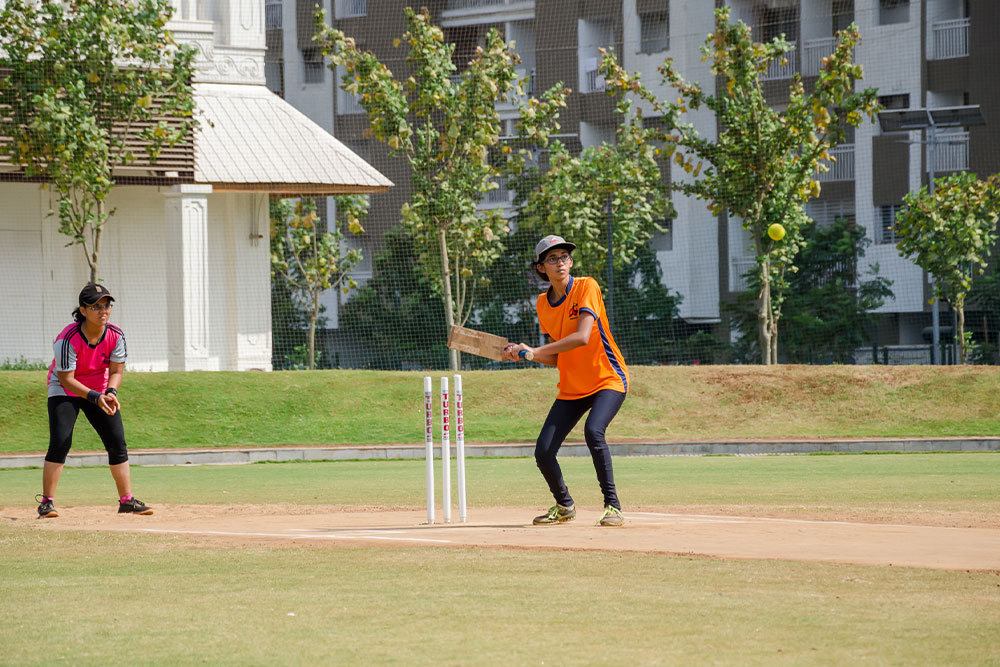Sport has been one of the key socio-cultural learning experiences for boys and men for many years. Those same benefits are not easily extended to girls. Sport is one area where gender inequality is strongly evident, even in this day and age. There is blatant disparity in the sport sector, based on biological differences. The problem is more socio-psychological than anything else. Today, as we stand at the beginning of a new millennium, it is unacceptable that men and women are treated differently, especially in sport. A recent research by the BBC in India showed that as many as 64 per cent of Indian adults did not participate in any kind of sport or physical activity. This figure was even worse when broken down by gender - nearly one and a half times more men (42 per cent) said they played sport than women (29 per cent). However, even this participation has an age skew with sports being played more by 15-24-year-old males than any other age and gender grouping.
The condition of women in sports in India is deplorable, despite promises of improvements and a handful of women players making their mark globally. From controversies involving skirt lengths to differing penalties and doubting their ability to perform the influence of immediate societal norms is rampant. Be it media coverage, prize money, facilities or awards, women have always gotten lesser advantage compared to men, and this continues even today.
The importance of sports in early childhood
Individuals who are active will often discover just how beneficial physical activity and participation in sport can be in managing stress, worry, or depression. Sport promotes health and wellness, improves confidence, and teaches leadership, and team skills. In today’s fast-paced and highly competitive world, this is of tremendous importance. The role of sport is essential in the lives of young people in general, but participation in sport holds a special significance, especially for girls and women. Sport teaches girls to acquire resilience and develop coping skills; it teaches them to accept winning and losing; it helps them meet new people, who share their interests; and, most importantly, it teaches them to accept and appreciate their bodies. In the long-term, playing a sport decreases girls’ risk of health-related issues, including breast cancer, diabetes, heart disease and obesity.
Do schools provide an equal playing field?

While most countries have initiatives for promoting physical activity and sport to try to improve health, it is repeatedly reported that females are less involved with sports and physical activity compared to males. Schools are an important place for nurturing the healthy development of children. It is in school that children grow into healthy, active members of society – but it’s also where social norms are laid bare and reinforced. Schools can play a vital role in upholding the norms that serve to develop traits including gender inequality, sexism, and bullying. As girls face prolonged barriers in their goal to become and stay physically active, PE lessons in schools should prioritise offering children multiple opportunities to try lots of different activities.
While many schools boast of having an ‘elite’ sports program for their students, it is predominantly meant for the boys. Very few private schools offer programs in competitive sports for girls. The Kendriya Vidyalaya Sangathan is one national-level institution among the very few that gives equal importance to Sports, Physical Fitness & Health Education, and growth of each student irrespective of gender. Operating hundreds of schools across the country, the KV Sangathan promotes various sports among all its students, and also organises regional, state and national-level competitions (often, in partnership with the Sports Authority of India and other sporting federations), which help those with potential go even further in their field.
Getting access

Gender discrimination begins at home initiated by parents’ unwillingness to let their girl child participate in sports. There exists a line of difference in the upbringing of a girl child and a boy child.
We are taught that girls are not supposed to play in the fields; in the open, girls are delicate, vulnerable, and might get hurt. The gift boxes containing racing cars, football or cricket bat are solely for our brothers.
Women and girls cannot play sport if they cannot get access to the necessary facilities. Too often, sport fields and recreational halls prioritise male sport when it comes to pitch time, so men and boys get facilities at their preferred times, while women and girls have to make do with less convenient times or no access at all. Clothing and equipment for sports can be expensive. This is a particular problem for women, given that Indian families do not believe in investing in sporting gear for a girl child compared to a boy.
Lack of role models in sports

In a country like India, it is not uncommon for girls and women to be denied equal opportunities at several levels because of factors like poor education, early marriages and a general lack of freedom to make decisions. While the men are introduced to sports and given opportunities to play cricket, football, run and cycle, girls do not have such a wide range of choices when it comes to sports. This is dictated by the wider sexism and gender biases that exist in India.
In addition, media coverage focuses almost entirely on men’s sports. On average, less than five per cent of sports coverage in national and local print media is dedicated to women’s sport. This is significant because media plays a central role in influencing our knowledge, opinions and attitudes about women and sport, which, in turn, influence participation levels.
Fighting all odds, Indian women, are breaking gender stereotypes to rule the global arena when it comes to unconventional not so urban sports like wrestling, boxing, kabaddi and weightlifting. Over the years they have done India proud by winning many international titles including in the Olympics, Commonwealth and Asian games.
Issues that no one talks about

Research shows that in general, female adolescents report greater body image dissatisfaction than males. However, body image is a particularly important issue in sport since research shows that women are far more self-conscious than men when taking part in sport and physical activity. For girls and women the relationship between body image and physical inactivity is a vicious circle; the more self-conscious they feel about their bodies, the less likely they are to take part in sport.
For many girls, being sporty is felt to be at odds with being feminine. Add to this the lack of sanitation and, more importantly, the lack of knowledge about how a woman’s anatomy and biology react to getting regular and professional physical activity through the discipline of a sport, and you have a situation where the odds are stacked high against this gender.